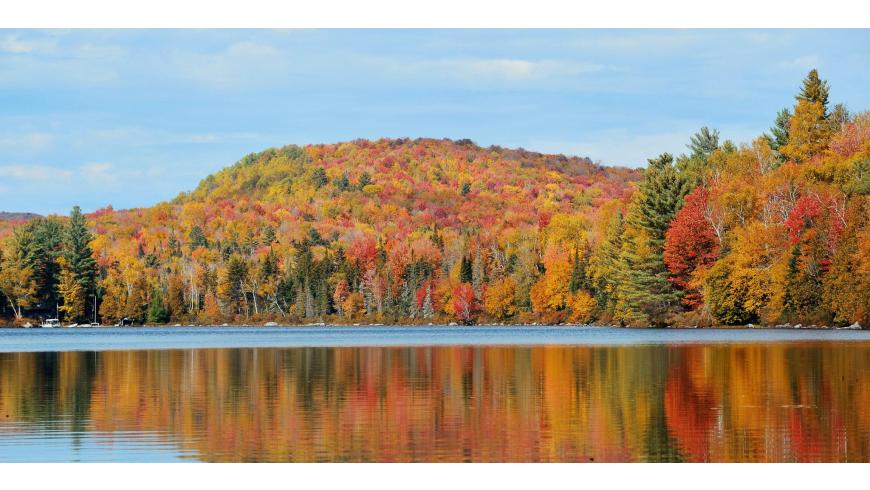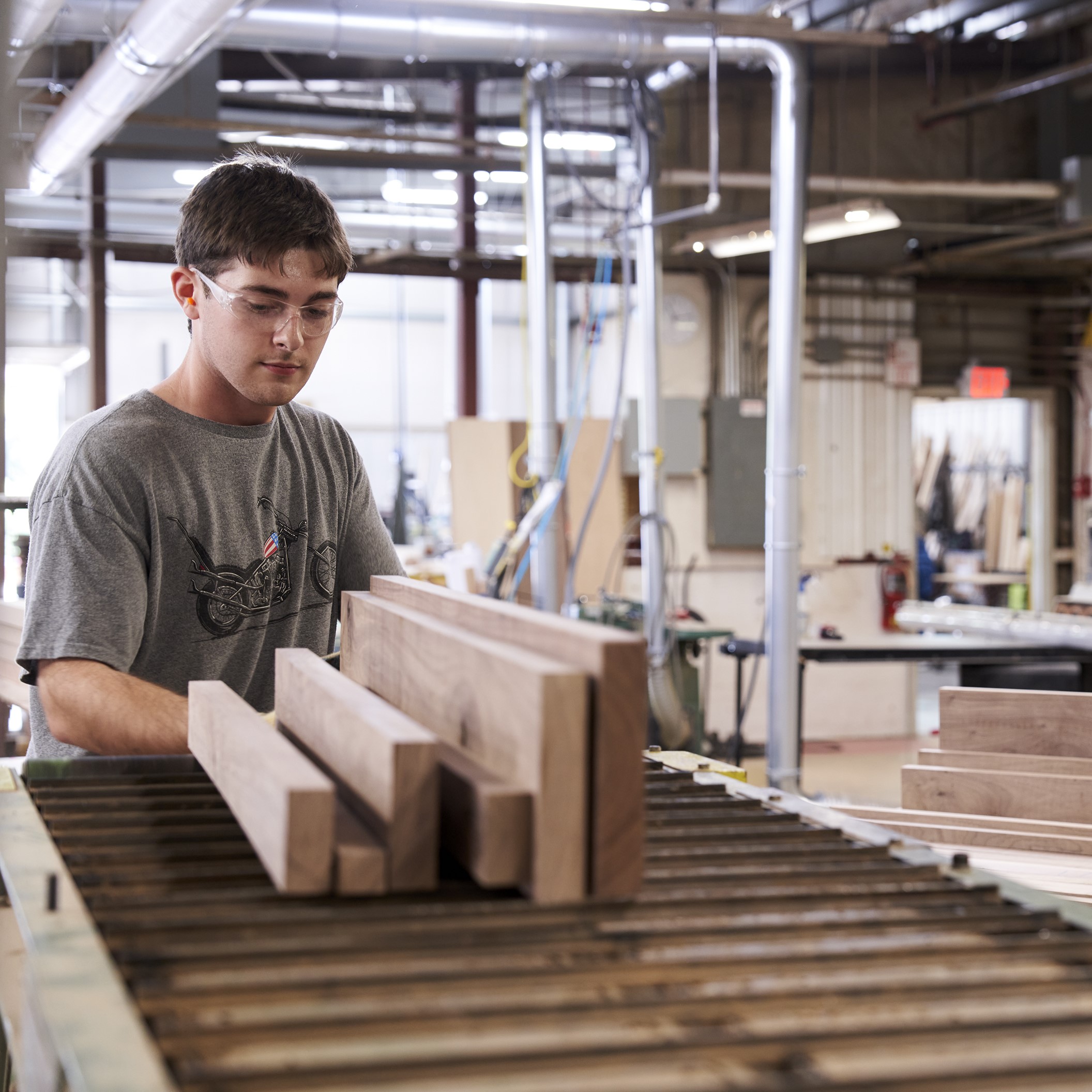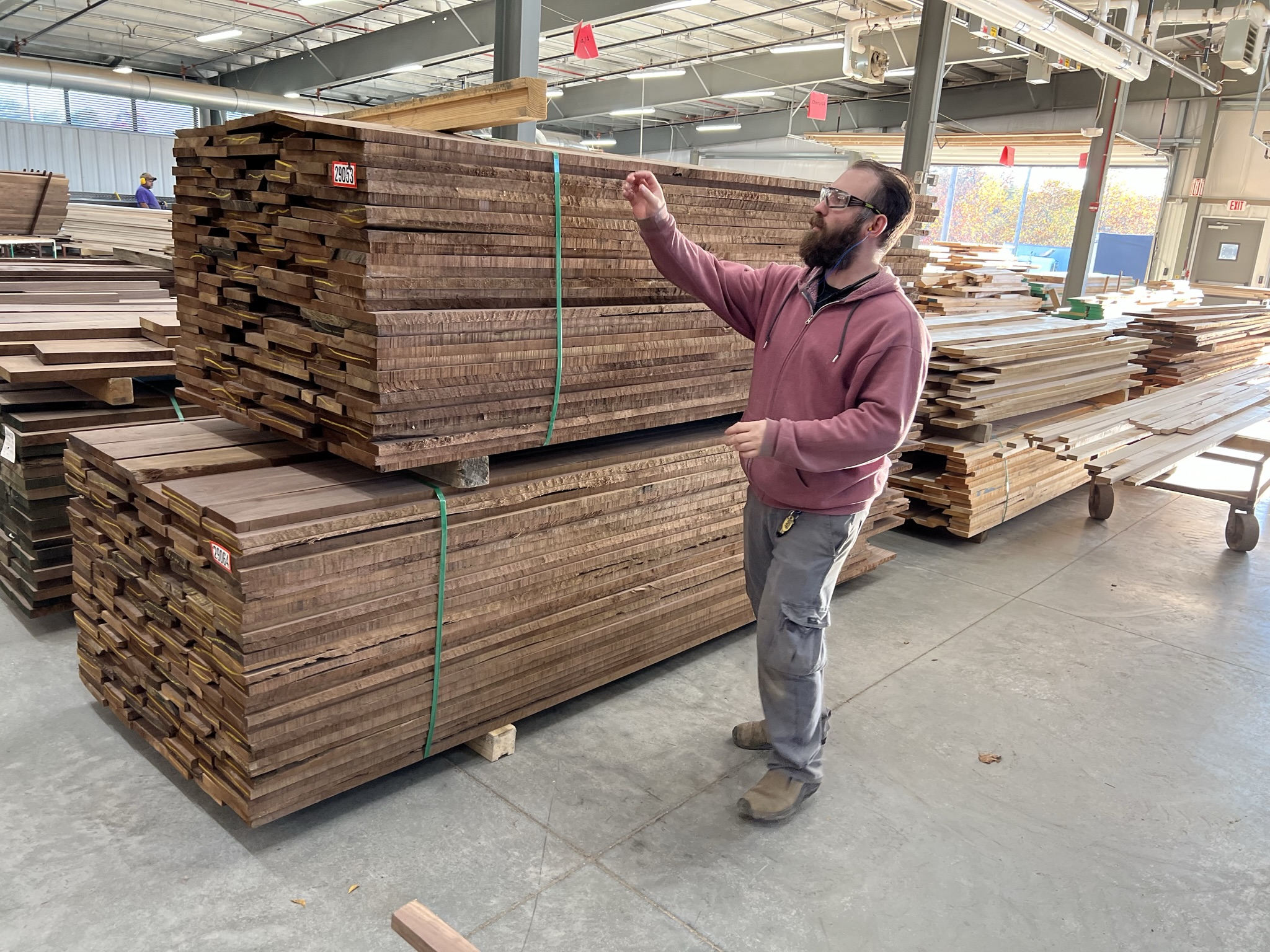Appalachian Hardwoods: America's Sustainable Treasure

In praise of Appalachian Hardwoods, America’s extraordinary natural resource.
We need only step outside our workshop to be reminded how fortunate we are to live and work in Berkeley Springs, West Virginia, smack in the middle of the vast, incomparable Appalachian Hardwood forest. Stretching from southern New York to northern Alabama, the region spans 200,000 square miles, encompassing 423 counties across 13 states. This high country has supplied builders and craftsmen since the nation’s founding and continues to produce — without question — the finest furniture-making material in the world.
Unique beauty, millions of years in the making
What is the secret behind Appalachia's abundance of exceptional hardwoods? The explanation involves massive geological events transpiring across tens of millions of years. Long story short, the Scottish Highlands and the Appalachian Mountains were once the same range, called the Central Pangea Mountains. Fast-forward a few million years after the continents drifted apart and for millennia thereafter Nature's handiwork has been forming Appalachia's unique environment where hardwoods thrive:
Glaciers Come and Go: In the Appalachian Mountains as far south as North Carolina, glaciers played a major role in shaping the landforms. When these great ice sheets retreated about 12,000 years ago, they left behind nourishing layers of soil and minerals.
Wind & Water: Picking up where the glaciers left off, the relentless forces of erosion grind away at the sedimentary rock — shales, conglomerates, sandstones, and limestones — turning it into rich nutrients for the forest.
Timber Terroir: Among wine connoisseurs, the concept of terroir contends that a growing area's topography, temperature range, soil composition, and climate determine a wine's quality. The same principle applies to Appalachian Hardwoods, growing in an ecoregion unlike any other on the planet.
Clearly, many factors have shaped the Appalachian ecoregion into the exceptional hardwoods incubator that it is. We must also count the warm summers that encourage growth, coupled with cold winters that moderate this growth. Slow maturity means our hardwoods develop tight growth rings, strong fibers, consistent grains, and rich tones. Ash, cherry, maple, oak, walnut, beech, and birch thrive here, and all share these enviable qualities. This is why woodworkers the world over prize Appalachian Hardwoods over any other material for furniture building.
A growing resource managed for everyone’s benefit.
Thanks to visionary stewardship, centuries of passion for Appalachian Hardwoods have not diminished the scale or health of the resource. Even today, hardwood trees in the Appalachian Range regenerate at 2.4 times the rate of harvest and morbidity. This is why we enjoy vistas of lush green waves, and layer after layer of forested mountains, as far as you can see, more breathtaking even than when our great-grandparents beheld the same views.
Past generations’ approach to the resource was less forward-thinking, to say the least. Swaths of clearcut scarred the landscape and stunted the entire ecosystem, flora, fauna, and river systems alike. Awareness and a new conservation movement thankfully took hold in the early 20th Century. By the 1920s, proper and dedicated forest management began.
"To pursue sustainability is to create and maintain the conditions under which humans and nature can exist in productive harmony to support present and future generations."
How to continue sustaining the forests while meeting consumer demand for solid wood furniture
Consider a stout, old Maple, just past its prime and vulnerable to extremes in the elements. Before it succumbs to natural causes, it is harvested. Its great canopy is now gone, younger trees, saplings, and ground cover receive sunlight as never before and the race is on. One will eventually assume the canopy of the fallen tree but a handful of other hardwoods will mature in common pursuit to be the next old guardian. Multiple trees mature to replace the one felled and in that way, consumer demand is met and the forest grows healthier with each passing year.
Selective Harvesting: As opposed to clear-cutting which removes all the trees regardless of maturity from large tracts of land, selective harvesting targets specific, mature trees. Their careful removal accelerates the growth of established, younger trees, with near-zero disruption of the ecosystem.
Owner Education: Private landowners hold roughly 60% of Appalachian forests — small businesses, families, or a single person whose livelihoods rely on a healthy, productive resource. Over the years, government agencies, universities, foresters, and forest product companies have united in support of sustainable forest management practices.
Consumer Action: The pocketbook will always have a strong voice in sustainability. When consumers demand that furniture companies abide by sustainable practices, the entire industry — loggers, sawmills, factories, and retailers — listens.
We are several decades into these proactive management activities while balancing a lighter hand of man with nature doing her thing. A diverse, thriving ecosystem is the reward, and today’s Appalachian region rivals the Amazon for the richness and variety of plants and animals that call our region home.
“Our” is a keyword in this equation. Human beings share this ecosystem. It’s where we live, where we recreate, and, for millions of us, where we earn our livings. The Appalachian Range “sustains” us.

Durable Appalachian Hardwood creates the smallest carbon footprint
Until our world gets its carbon output in balance, our forests will remain essential for capturing and storing carbon to moderate the climate, while converting carbon dioxide to life-giving oxygen. And those fallen and selectively harvested post-prime hardwood trees? Not only will they find a noble second life as gorgeous furniture, but their stored carbon will be retained permanently.
Permanence is at the heart of Appalachian Hardwood’s appeal. The material’s legendary durability is yet another significant advantage over veneered imports made from chemically treated laminates and illegally harvested tropical woods. Our hardwood furniture, properly cared for, can last several lifetimes. Repair it, reimagine it, and refinish it to reflect the tastes of every new owner. Meanwhile, the fate of disposable imports is the same everywhere: filling up local landfills.
Well-managed forests sustain us, too
The Environmental Protection Agency sums up the principle this way: “Everything that we need for our survival and well-being depends, either directly or indirectly, on our natural environment. To pursue sustainability is to create and maintain the conditions under which humans and nature can exist in productive harmony to support present and future generations.”
Sustainability has entered the public consciousness and become an important consideration when buying goods. Consumers must be aware that not all companies in the forest products industry act with the same good faith and integrity as the private landowners, government agencies, and silviculture professionals who have joined forces to perpetuate a healthy and productive Appalachian forest.
“Green Washing” — fraudulently claiming sustainable practices — has become commonplace in the furniture industry, and with troubling repercussions. Now more than ever, consumers should seek out furniture brands with meaningful accreditations.
Credible third-party designations like “Certified Sustainable and Legal by the Appalachian Hardwoods Manufacturers organization,” “Silver Exemplary Status Accreditation,” and “Founding Member of Sustainable Furnishings Council” guarantee the products you buy put sustainability and the health of your family and the forest first and foremost.
The forest feeds rural communities and families
Thinking “local impact” extends to supply chains and rural economies within the Appalachian ecoregion. Consider the fossil fuel consumption required to move timber across a foreign continent; then containers of material and finished goods across oceans; only to then require days on U.S. highways from port to distribution centers to warehouses to the retail floor.
Conversely, our Appalachian Hardwood suppliers are no more than a day’s drive from our factory. Same for the vast majority of Gat Creek retailers and designers. From forest to workshop to retail floor, our carbon footprint barely makes an imprint. And yet, all along the way, thousands of lives invested in rural America sustain their housing, wages, families, education, and way of life in a land dear to their families for generations. All because of Appalachian Hardwoods.
American-Made, Appalachian Hardwood furniture; the simply beautiful choice
Unlike Earth’s other natural resources — fossil fuels, mined elements, etc. — Appalachian Hardwoods regenerate. With continued common-sense management, we will never run out. Beyond cutting and planing it into the shapes we want, it requires near-zero processing. In fact, the less you do to it, the more its native beauty emerges.
This simple, extraordinary resource, thriving in some of the country’s most breathtaking high country, touches, delights, and improves so many lives. American-made, Appalachian Hardwood furniture is an investment in longevity, beauty, and sustainability. What's more, beyond solid wood furniture's legendary durability, specifying Appalachian Hardwoods means peace of mind and deep satisfaction that your well-considered purchase supports a community and preserves traditions that have been alive for generations.
Welcome Appalachian Hardwood furniture into your home proudly and with the knowledge you have made a smart, sustainable, beautiful choice.

At Gat Creek, we know that curiosity leads to better decisions. If you're interested in learning more about sustainability, responsible sourcing, and American craftsmanship, we’ve gathered a selection of trusted resources for you to explore:
About Appalachian Hardwood Sustainability
- Appalachian Hardwood Manufacturers, Inc. (AHMI) — Promotes sustainable harvesting practices in the Appalachian region.
- The Nature Conservancy: Conserving the Appalachians — Details the importance of preserving the region's forests and biodiversity.
- WWF: Appalachian Mixed Mesophytic Forests — Highlights the ecological significance of Appalachian hardwood forests.
Industry Standards and Sustainability Certifications
- Sustainable Furnishings Council (SFC) — Advocates for best practices in sustainable furniture production.
- National Hardwood Lumber Association (NHLA) — Establishes standards for grading and responsible sourcing of hardwoods.
Gat Creek in the News
- Washington Post: How Gat Creek Retooled a Furniture Factory — A closer look at Gat Creek's sustainable business transformation.
Understanding Sustainability
- U.S. EPA: What is Sustainability? — Defines key sustainability concepts and productive harmony principles.
